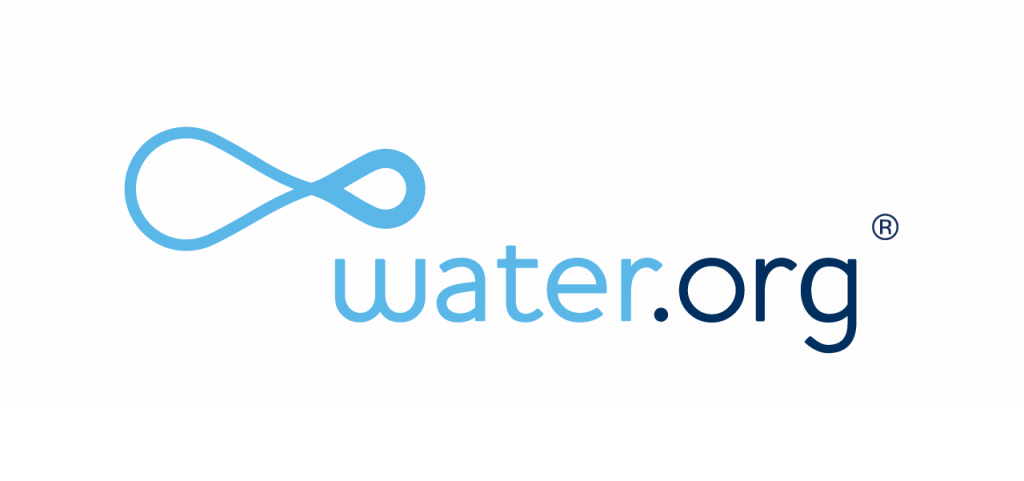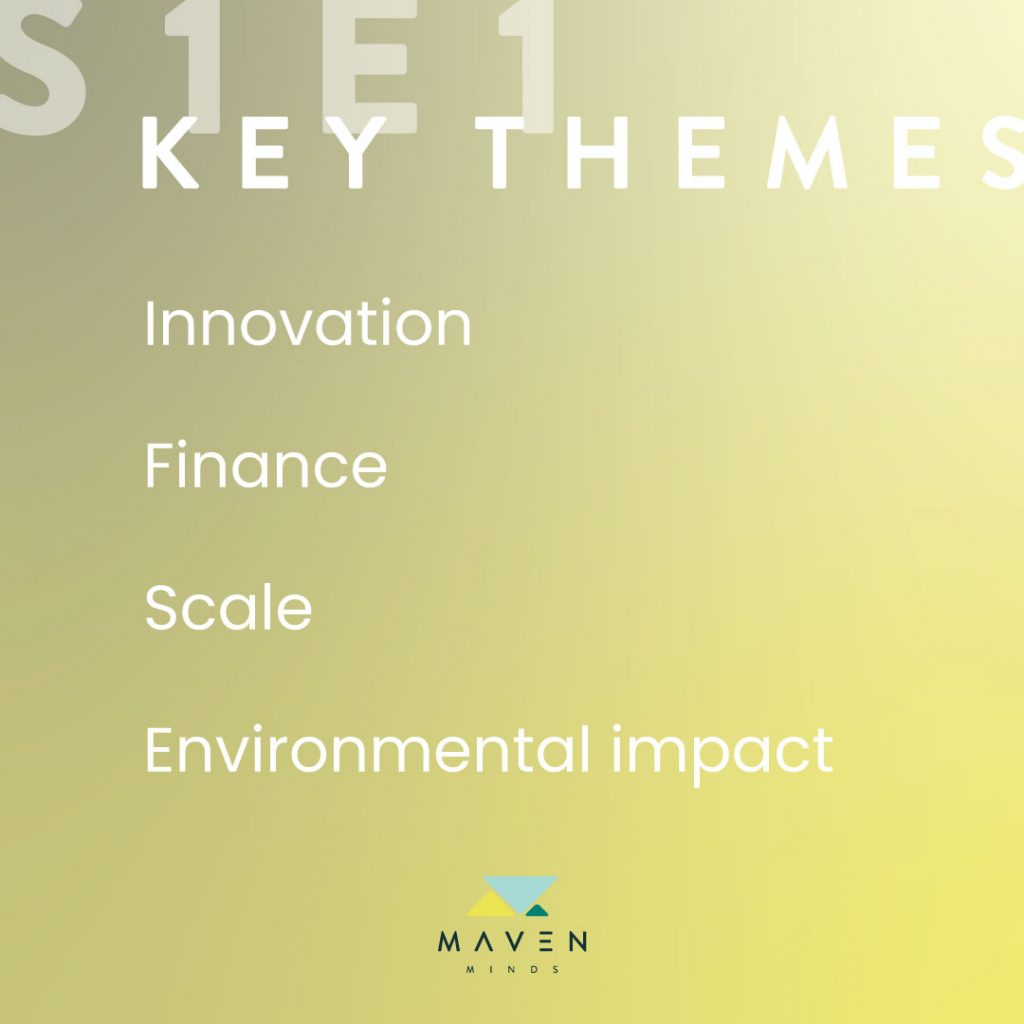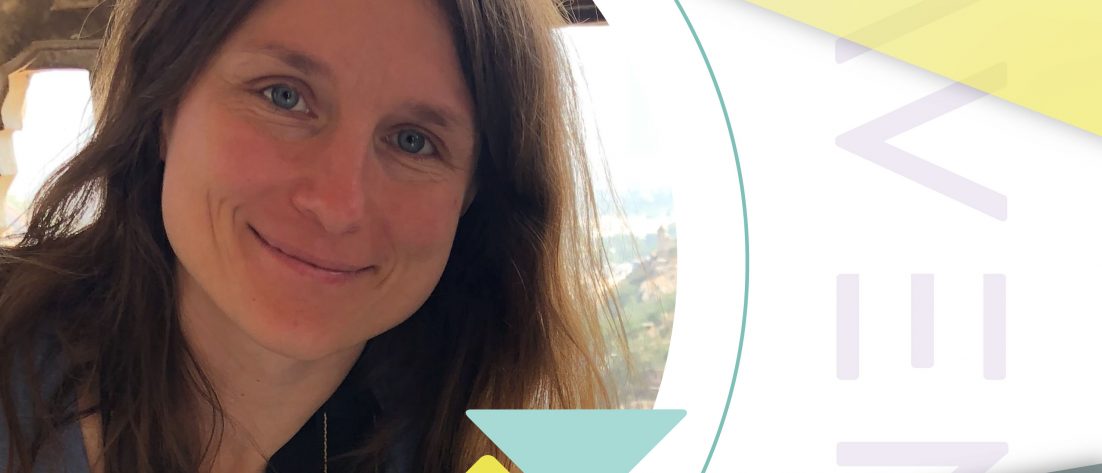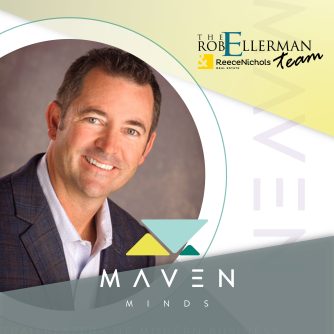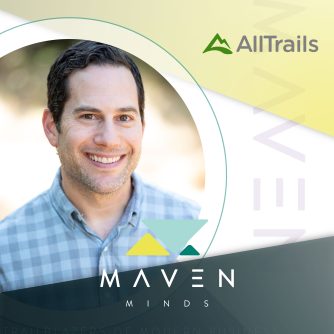In developed countries, access to safe water is an unnoticed luxury. But, by 2030, an estimated 700 million people worldwide will be displaced from their homes due to water scarcity.
Heather Arney, Senior Manager of Insights and Innovation at Water.org, and her team have invested years of research and innovation into creating ground-breaking water and sanitation solutions for remote populations.
Their creative approaches tackle all angles of the problem including financing, markets and on-site solutions like wells and sanitation. With the growing impacts of climate change, their solutions are being tested worldwide as they aim to solve the global water crisis.
Transcript
[00:00:00] Laura: Welcome to Maven Minds, the podcast for leaders, entrepreneurs, and innovators to discuss strategies for navigating uncharted territory in modern business. I’m your host, Laura Crossley. Let’s meet the mavens.
[00:00:27] Heather: Because really the biggest challenge that we’ve had, you know, in the sector is just, there’s not enough financing to go around. So, around $114 billion per year is needed to finance water and sanitation. And we don’t, we’re like at a third of that, like, there’s, there’s just such a big gap of, of what the financing needs are for what our sanitation and that’s even before factoring in the effects of climate.
[00:00:53] Today, we’re talking with Heather Arney, the senior manager of insights and innovation at Water.org. Water.org is an international nonprofit that is positively transformed more than 45 million lives around the world with access to safe water or sanitation. It was founded by Gary White and Matt Damon, pioneers market-driven financial solutions to the global water crisis.
[00:01:16] Laura: Heather brings more than 20 years of international development experience with a focus in microfinance, water and sanitation and gender sectors to the insights and innovation strategy at Water.org. Since joining the organization in 2005, she’s pioneered and scaled water credit expanded international partner networks and capabilities designed and implemented strategic programs and developed information systems and tools for program monitoring, verification and research.
[00:01:45] Her current focus is on climate change and water and sanitation resiliency, which she’s gonna tell us more about today. Heather, it looks like you were on board with Water.org in its very early days. Is that right?
[00:02:06] Heather: Yes. Yeah. I’ve been with Water.org since 2005. It’s been a ride. It’s been an adventure. I joined Water.org, not too long after I finished up with Peace Corps in West Africa and did a graduate program in international affairs with a focus on women and development. It’s just been such a unique opportunity to be able to grow with the organization.
[00:02:35] When we first started, we were, I think we were definitely well under a hundred thousand people that we’d reached. Today, you know, we’ve just surpassed over reaching 45 million people. It’s just been really incredible to see the growth and the scale. Starting out on a team of maybe five or six of us and then now an organization over a hundred, a hundred-plus people working in 11 countries. It’s been, been really exciting and, and amazing to see the work and scale and the impact of our work.
[00:03:11] Laura: Yeah, that is unbelievable. And I personally just finished reading Gary White and Matt Damon’s book The Worth of Water from Water.org. I was fascinated by exactly what you’re describing: the innovation and the impact that has come from your organization because the structures are not what’s typical in the world. You’ve had to be very creative with the way that you’ve gone about it. And I just appreciate that so much. I know we’re here today to talk about addressing climate resiliency and water and sanitation access. Can you tell me more about this and what it is?
[00:03:53] Heather: Yeah. And, maybe before we jump in too, I think sometimes it’s hard to sort of imagine what a day, what a day looks like without having access to safe water or a place to go to the toilet. I think, when I was in my young twenties and when I was in the Peace Corps and living in West Africa, that was probably my first real exposure to that.
[00:04:14] And first sort of understanding with it. So I’m a big soccer player and played soccer during my experience over there. And I just remember, kids didn’t have water bottles to take with them to soccer. They didn’t have anything around to get water with. And, it was just sort of an adjustment of realizing that that’s kind of a luxury.
[00:04:37] Then, the family I lived with. They just had an open well where things just fell into it. We just pulled up the water through a bucket. You know, recognizing how much that contributed to the health of the community that I was living in. And the same on the sanitation side.
[00:04:57] We were living with a household that was probably more fortunate where they had a latrine connected to the house. But they shared it with like four or five other households, and it would get overflown all the time and it was just expensive to empty and maintain it.
[00:05:13] It’s just a different way of thinking about water and sanitation. You know, we take it for granted because it’s always there, but when it’s not, it’s the first thing you notice not being there. Diving into climate, it’s definitely an area that makes our work more challenging. As we know, the climate is changing, the world is seeing more intense rain or just too little of it. But the way that the effects of climate change and people are feeling it is usually around water because it’s either we’re having floods or extreme weather events like hurricanes or we’re seeing really long droughts that are more persistent or an increase in desertification, forest fire, those types of events that are happening more, more, more frequently. It’s really taking a toll out, especially on those that are living in very poor communities. I mean, we all are. We are feeling the effects of climate change. I’m out in the Pacific Northwest; we’re dealing with forest fires a lot.
[00:06:26] For the poor, it just impacts them so much more because they’re feeling it first and they’re feeling it the most intense – especially in terms of their basic water supply and sanitation needs.
[00:06:43] So, for what that may look like as water supplies dry up – there are heat waves and then there’s just less water to go around. The price of water goes up and, particularly for the poor, it becomes an increasingly larger part of their limited monthly income that they have to pay for.
[00:07:04] People are having to go longer distances to collect the water. Maybe instead of it being a 10-, 15-minute daily routine, it becomes hours. And, often the water is less quality. So instead of those open water sources of river beds or streams, they’re sort of digging to find water sources under the surface.
[00:07:25] When that happens, there are all kinds of implications. Particularly with health, like community health. As water is worse quality, or if there are floods where sanitation facilities are destroyed, like the fecal matter will mix into the water supply, into lakes and rivers.
[00:07:49] That causes a wide variety of water-related sanitation diseases. You know, particularly diarrhea, unable to absorb nutrition from food. And that really has health and livelihood implications. Another thing that we’re learning more about too, is people as they have to walk further for water or don’t have that facility for sanitation – it impacts women and children the most.
[00:08:20] They’re the primary ones that have to collect the water. They also have more safety concerns. Like if you don’t have a toilet in your home at night, you have to go out. That can be scary and can be dangerous. That increase of violence is a challenge as well.
[00:08:41] There are also even longer-term effects like that could happen as water supplies really, really dry up in different communities. They really end up with not many other choices, but to migrate. As like drinking water is not there, farms fail, agriculture can’t survive.
[00:09:00] So people have to move and there are some pretty scary numbers out there. One estimate is that they’re expecting about 700 million people to be displaced by 2030 due to water scarcity.
[00:09:15] Laura: That’s seriously unreal. Wow. Yeah. When you’re describing that a lot of our society doesn’t understand what it’s like to not have water, and then you hear that description that you just ran through – especially thinking that that number of people won’t have water or have the ability to access it in some fashion – that’s bonkers. That’s absolutely crazy. I’m sure that the impacts of that snowball through education and jobs and all kinds of things – as far as those roles in society and people’s ability to participate in that kind of thing?
[00:09:52] Heather: Yeah. Exactly. Exactly. And especially, you know, if you’re having more and more time to go collect water, that’s less time for school. It’s less time for your job and income activities and less time just for kids to play and to study and to just be normal kids. So it’s, it, it really does put, play a toll on all aspects of life.
[00:10:13] Laura: So what is Water.org’s role in trying to help solve for this?
[00:10:19] Heather: Right. Well, Gary White originally founded the organization in 1990. And, the vision is for everyone in this world to have safe access to water and sanitation. In many ways, we’ve always been playing a role on the resiliency side of making sure that people have sustained access to water and sanitation.
[00:10:43] However, there’s definitely more that we can be doing. We’ve had a lot of scale with a particular model called WaterCredit, and that’s where we sort of bridge microfinance to the water sanitation sector. So people, for example, that can’t afford the front costs of maybe a piped water connection to their house or a deep borehole to have potable water for their family or a toilet in their house.
[00:11:12] They’re able to get that loan for $300, $400, $500 depending on what they’re doing and repay that loan over time. That really allows people to have affordable options to do that. Because of the cost that they’re already spending with water or sanitation, They’re paying more money to water vendors or they’re that time to go collect water.
[00:11:39] It actually ends up in many cases, people are benefiting from that financial perspective too, of being able to have that improvement. We’ve spent 15-20 years applying microfinance and seeing how we can do that, because really the biggest challenge that we’ve had in the sector is that there’s not enough financing to go around.
[00:12:03] I think around which is $114 billion per year is needed to finance water and sanitation. And we don’t, we’re like at a third of that. There’s just such a big gap of what the financing needs are for water and sanitation. And that’s even before factoring in the effects of climate change which we know are only gonna cost more and more money for people to have access.
[00:12:28] Being able to come up with like solutions, like WaterCredit, where the money gets recycled and it’s not reliant on donations. It’s not philanthropic grants. It’s not relying on government subsidies that may or may not come through one day. It’s really able to, you know, to put that money back in and keep, keep using it.
[00:12:49] Once we were able to sort of figure out that model, we’ve really been able to scale it across 150 partners that we work with in the 11 countries. With that capital, there’s been more than 3 billion that we’ve been able to mobilize. It’s gone out into these close to 10 million improvements that have happened.
[00:13:08] Models that are creatively trying to work within the market forces that are already happening is part of the solution to universal access. One thing that’s great about microfinance is it always adapts locally.
[00:13:26] Climate change is obviously a global issue, but it’s felt locally. And what it looks like locally is different across every different community. Some communities may be facing more and more drought and then intensive rains. And others may be facing sea level rising, for example.
[00:13:44] Particularly with these local effects of climate change, people have to really have smart solutions that work well for the changes that are happening in their environment. Being able to make those choices that work best for individual households is really important.
[00:14:04] That’s one of the things that we’re doing. We have a sister organization, WaterEquity, that’s basically emerged out of Water.org. We just talked about microfinance, but, this is helping to mobilize more of larger macro investment to support financial institutions, to make those loans.
[00:14:27] Or to support utilities that are working on much larger infrastructure that would go into into servicing 20-, 30-, 40,000 people with a utility. They’re starting to have a lot of success with a hundred plus investors. They have nearly a hundred investors that are committing more than $200 million in just water and sanitation infrastructure improvements.
[00:15:01] I think that’s a really strong signal that there are big investment opportunities out there. And there’s huge amount of potential with climate dollars to help support the water and sanitation sector. As we get more and more evidence, it’s showing there’s a demand and there’s a need for this financing, but also that the poor or organizations that support poor communities, they’re able to repay those loans and make it less risky for those investors.
[00:15:35] Laura: That makes a lot of sense. You know, when I was reading the book, part of the storyline that really caught me was just the differentiation between investment and philanthropy and that people mentally have a hard time living between those which, it sounds like, was that gap that you all were attempting to close.
[00:15:56] Like, you can invest and it can be something that doesn’t have to be a straight-out donation that allows for these families to have the dignity of owning their system and owning their solution. I thought that was incredible. Do you think that that’s still something that people are struggling with?
[00:16:16] IThat kind of middle ground between “we’re just going to donate and pay for this” versus the longer-term investment?
[00:16:25] Heather: I think to some degree, but I also think people are really recognize the sheer urgency and massive size of the problems that we’re talking about. They’re recognizing that there’s just simply not enough philanthropic capital to solve the crises that are going on.
[00:16:47] So we have to figure out how to use the markets that are global and that are local in order to keep that capital coming in. It’s looking at it through/applying kind of market forces, but with a social mission.
[00:17:06] Laura: Oh, I love that so much. That’s, that’s such a good description of it. What stage of this would you say that we’re in?
[00:17:15] Heather: Like I said, Water.org’s been looking at sustained water citations since 1990. But that said, applying an approach for climate is relatively new.
[00:17:34] The conversation that all of the water and sanitation sector is having, what are we gonna do about climate resiliency? Is there an opportunity for mitigation to help limit the water sanitation sector’s effects on climate change? Because the sector does contribute through greenhouse gas emissions.
[00:17:54] In some ways, we’ve been doing it from the beginning, but other ways, there are new approaches and frameworks that we need to apply. We’re working right now with researchers, academics, policymakers, sector influencers to really sort of understand more about what urgent changes can we make. We’ve been working on different local assessments and trying to understand deeper at local levels. What are the climate changes that are happening? What are different infrastructure or product types that could occur? Different financing tools that can help people either have those facilities that they need to deal with the climate changes that are happening? Or to rebound quicker from big climate shocks, like weather events that destroy infrastructure? We’re, in a lot of ways, in the early days. But there’s a lot of potential to sort of apply that approach of climate and to think about our infrastructure.
[00:19:04] For example, water and sanitation infrastructure has traditionally been thought of and developed in climates that are pretty consistent, or there’s not that much change. But we have to sort of speed up the process for some of the innovation around the different products that people would be having for their solutions. One good example is at a real local level a household that needs a toilet.
[00:19:27] If they’re in a flood-prone area, they’re gonna need a toilet that’s raised more so that when the floods do come, that toilet has a better chance of surviving that event. That also keeps the waste contained so it doesn’t get into the community water supply and watersheds in that area.
[00:19:48] There are some solutions like that for water supply that. I think we’ve learned having more than one strategy is or one water source is a good strategy. For example, maybe they have a household connection to utility, but that utility regularly faces shortages.
[00:20:12] So they have a second solution. Maybe that’s like a tank that stores water, so they can use that tank. And it’s safely, as clean water, safely kept and they can use that water when there’s a shortage, for example. Having more than one solution is another approach.
[00:20:29] On the mitigation side, there are really some opportunities, at utilities and service provider levels to be more efficient with their energy. In sanitation, like with wastewater and treating wastewater, actually opportunities to sort of leap frog technologies so that you could even go carbon neutral with the whole process and on the water supply side.
[00:20:55] A tremendous amount of water is completely wasted through leaks in the pipes. That water, besides being expensive to treat and to move, takes up a lot of energy. That’s energy is coming from fossil fuel sources. Utilities that can lose 30-50% of the water just in those leaky pipes.
[00:21:20] So having investments to fix those pipes can save that whole process. Those are just like a couple of examples of ways to think about a climate lens and approach in our work. We’re starting to learn a lot more really quickly.
[00:21:37] And starting to get into some pilots that look at some of these approaches. That’s so cool. It’s an exciting time but also just this feeling of urgent solutions that we just have to figure out. Definitely.
[00:21:52] Laura: Well, and it sounds like you take a very multifaceted approach to innovation coming from like the finance side and the actual, tangible “here’s a tool or a solution to the water problem.” Is that right?
[00:22:06] Heather: That’s correct. Yeah. There’s no silver bullet. There’s no one size fits all. Especially with climate, this felt so locally, you have to have different, different options in all different kinds of scenarios.
[00:22:23] Laura: Is there a singular challenge that you’ve faced? Even from the business perspective, a major hurdle to getting at these solutions and these new innovations?
[00:22:37] Heather: Single challenge. I mean, it really goes back to financing and that’s why that’s our niche in the space. There’s not enough financing for the sector.
[00:22:50] So how do we break down those barriers? And there’s more than one barrier that’s for sure. And that’s why looking at it from the microfinance is one way to approach it. Thinking more about larger infrastructure, project projects and business, bigger investments into utilities is another. I think our earlier days with WaterCredit, we really had to develop an evidence base to show that the poor are not only willing to take out these loans, but they can repay those loans.
[00:23:23] Water sanitation improvement is not a direct income-generating activity like a lot of the micro loans are for. But it improves lives in so many other ways that the financials are seeing “wow, they’re repaying these loans. Plus, this is part of our mission too.”
[00:23:41] We know you have to have water and sanitation to get out of poverty. It’s sort of a win-win scenario in that case as we work with bigger utilities. Investors are looking at and being like “I don’t know that that might be a risk. Are they gonna be able to pay me back?”
[00:24:01] That’s where a lot of our services can come in with technical advisory, with trying to connect the right capital to the right utilities. That’s why water equity is just doing such a great job. Being able to channel in a lot of potential investment for the water sanitation sector.
[00:24:24] Laura: Very cool. Is there something that our listeners could be doing to help support these initiatives?
[00:24:33] Heather: I mean, just listening is great. Just learning more about first the water sanitation crisis that’s happening, but then also learning about how it’s even becoming more urgent with climate change.
[00:24:48] We have to move even quicker to plan and to mitigate risks for people. Not having water sanitation, even through their new improvement, there’s a lot of information on our website at water.org. We’re also on social media – Facebook, Instagram, Twitter.
[00:25:11] I just encourage listeners to check out our website and information and learn more.
[00:25:18] Laura: Awesome. We will absolutely share those links on our website and all of our social media as well, so that people can get at you pretty easily. Heather, I so appreciate your time and insight today.
[00:25:35] Thank you so much for joining us. And I really hope that we can follow up with you in a year or so, and hear how this is evolving and changing and what impact we’ve
[00:25:45] Heather: Please This was obviously a conversation that I live and breathe and love to talk about. I just appreciate your interest and helping to create awareness around these issues. So thank you.
[00:26:13] Laura: Thank you for joining today’s conversation before you leave, hit that subscribe button so that you never miss an episode of Maven Minds. And, whether you are a first-time listener or you’ve been following along for some time, you are invited to join the discussion in our communities on Facebook, Instagram or TikTok.
[00:26:33] We’d love your insight on the topics we’ve covered today. So join us on social or mavenminds.com and inspire others to keep blazing these trails in modern business. We’ll see you in the next episode of Maven Minds.
